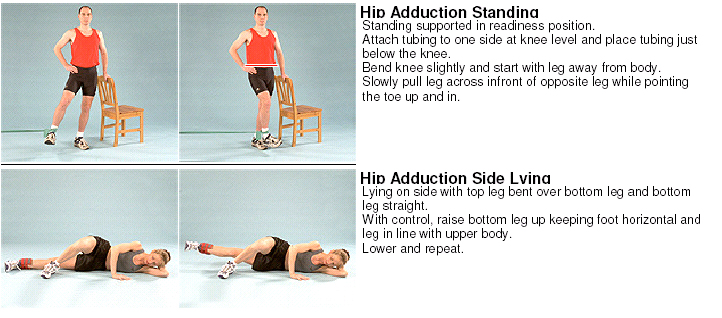Burlington Physiotherapy for a Pulled Groin / Adductor Strain
As hockey season is now in full swing, we’re starting to see more hockey related injuries in our clinic. Hopefully, it’s not too late to address the prevention of what is often considered the most common injury in hockey players: the adductor or “groin” strain.
Anatomy of the “Pulled” Adductor
A group of six muscles located along the inner thigh are referred to as the adductors. These muscles include the pectineus, adductor longus, adductor brevis, adductor magnus, gracilis and obturator externus. To help you identify these muscles, squeeze your legs together; these are your adductors, and this motion is their primary action!
Pulled Groin
According to some authors, adductor strains account for 10% of hockey injuries. Often, adductor injuries occur close to the pelvic attachment where the tissue is more tendinous. Tendons are the end of muscles (where they attach on to bones) and because they have a relatively poor blood supply they are slow to heal when compared to muscular injuries. Given this, prevention is key!
Adductor Strain
Commonly, athletes and healthcare professionals are under the impression that tight muscles lead to injury. Interestingly, the authors of a study published in the American Journal of Sports Medicine found that tightness of the adductors had no bearing on the frequency of adductor strains in elite hockey players. Instead, their findings suggested that weakness of the adductors predisposed these players to adductor strain, and they were able to outline specific criteria to help identify those players who may be at risk of this injury.
Adductor Exercises
In a separate report, the same authors outlined a strengthening program that was shown to reduce the occurrence of adductor strain in hockey players who were at risk. Below you will find a few of the simpler exercises that were suggested by these authors. As always, we recommend that you consult a suitable health care practitioner before implementing a new exercise program. In this situation, you may want to consider an assessment to identify if you are particularly at risk for this injury.
It is also important to keep in mind that there are various conditions that mimic the symptoms of adductor strain. If you’re already experiencing pain in this area, be sure to have it examined by a suitable healthcare practitioner (like a chiropractor or medical doctor) who is properly qualified to diagnose these injuries.

References
Tyler TF, Nicholas SJ, Campbell RJ, et al. The association of hip strength and flexibility with the incidence of adductor muscle strains in professional ice hockey players. The American Journal of Sports Medicine 2001; 29: 124-128.
Tyler TF, Nicholas SJ, Campbell RJ, Donellan S, McHugh M. The effectiveness of a preseason exercise program to prevent adductor muscle strains in professional ice hockey players. The American Journal of Sports Medicine 2002; 30: 680-684.
Disclaimer https://burlingtonsportstherapy.com/blog/disclaimer/







